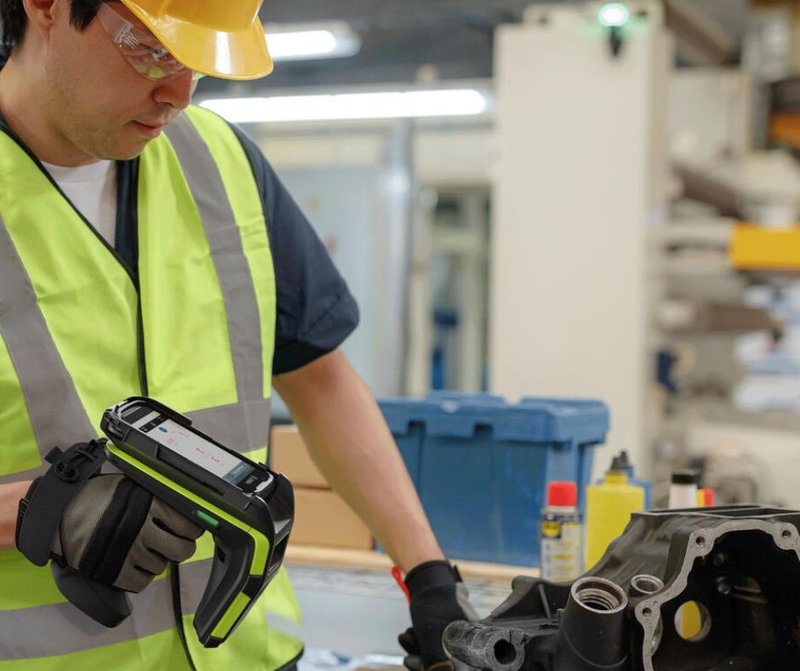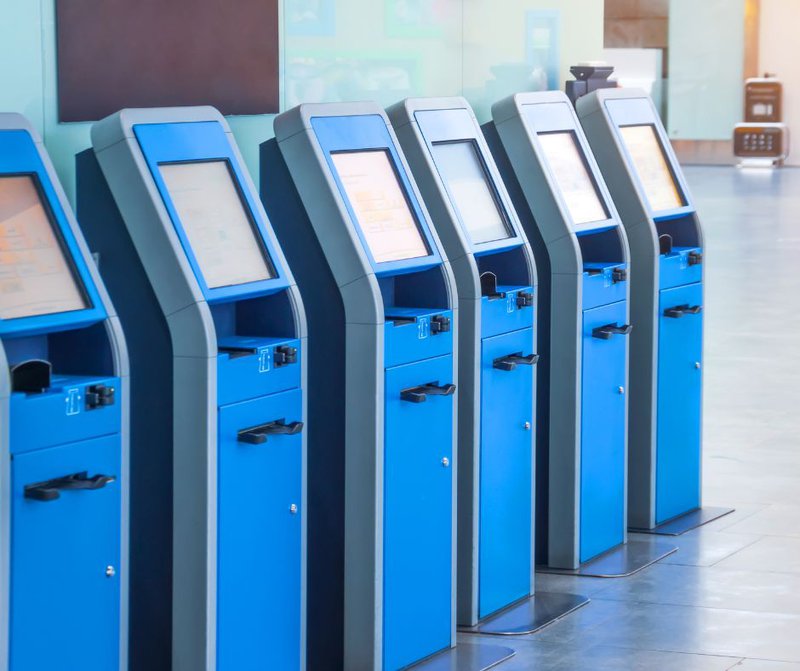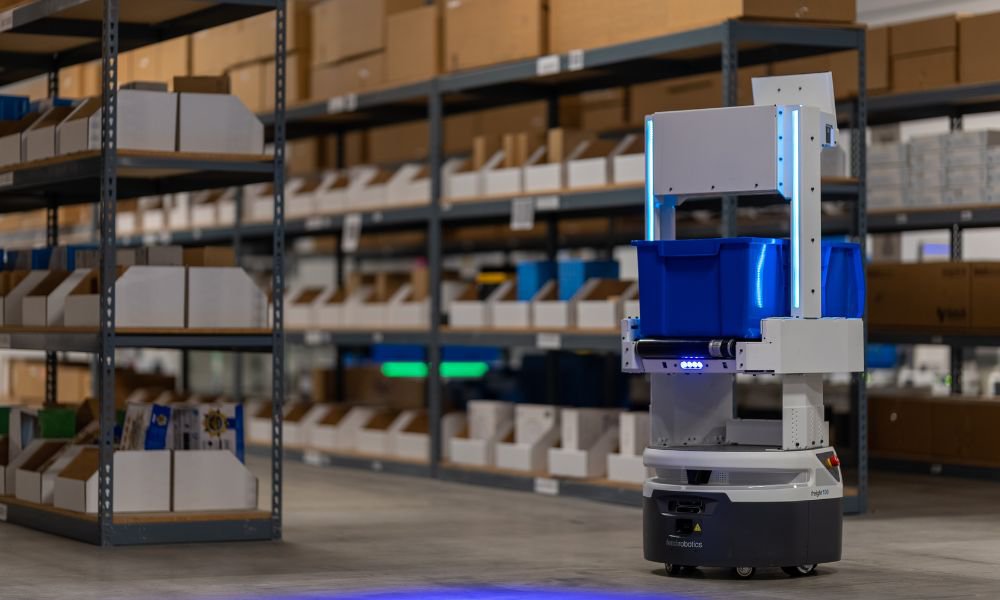In a 2023 article for the Federal News Network website, Michael O’Hanlon, senior fellow at American think tank Brookings, talked about the shortfalls in American armed forces logistics. He said it has been ‘spoiled’ in modern times by fighting enemies that do not have the resources to disrupt US supply chains. However, if a war broke out with a bigger player, he said, we could expect targeted and devastating attack on those supply chains.
As a close partner to the US military, with many of the same enemies, UK defence forces may recognise similar shortfalls. However, both nations are actively and rapidly upgrading capabilities for logistics in the military environment, with a strong focus on emerging technologies and the power of big data decision-making.
Data-capture technologies and AI can play a huge role in upgrading and improving logistics in the military. They can analyse data in vast quantities and optimise the movement of materials, ensuring servicing and repairs are carried out more quickly and efficiently.
All of this can sound a little abstract and ‘under the hood’, so in this post we’ll look at what these changes in technologies will look like in practice, on the ground. Here’s five technologies, each informed by data-led strategies, that we believe will play an increasingly important role in future military logistics across the globe.
1) Automated RFID inventory
With massive volumes of supplies moving across the globe, tracking inventory has been a challenge throughout the history of logistics in the military. Automated radio-frequency identification (RFID) technology can play a vital role in improving efficiency. These small, wireless devices are attached to equipment, supplies and assets. Working with logistics software systems, they provide:
- Inventory overview – a real-time view of location, availability and stock levels of items, to reduce the risks of shortages or overstocking
- Increased accuracy- minimising human error
- Enhanced security- by helping to authenticate the origin of supplies
- Rapid deployment – streamlining the process of loading and unloading cargo
- Labour force efficiencies – with less time required for scanning, searching, and loading and unloading, fewer workers are needed

2) Automated pallet movements
It’s not just Amazon that’s bringing robots to warehouses. The increasing number of robotic pallet products coming to market suggests industry and the military will increase the uptake of automated solutions. These advanced-technology pallets can undertake all the tasks associated with traditional forklifts, including unloading and storing, and cross-docking. Benefits include:
- Increased efficiency – automated pallets can work without breaks for longer, lowering overall labour costs
- Faster response– they are trackable, which can help to optimise warehouse operations and lead to faster deployment of materials
- Safety. According to TechCrunch, 11% of US forklifts are involved in accidents. Of these, per year 85 are fatalities and over 34,000 serious injuries. Automated pallets typically have advanced safety features that can reduce the risk of accidents and injuries associated with manual material handling
To get a greater understanding of the huge potential of robotics and automation in warehouse environments, take a look at the range of autonomous mobile robots (AMRs) offered by Fetch Robotics.
3) Self-service kiosks
There probably aren’t many occasions where the worlds of shopfront retail and logistics in the military have much crossover, but this is one of them.
Self-service kiosks offer huge potential to speed up defence forces processes, across several areas. The look and feel of these machines replicate supermarket checkouts, or self-check-ins at airports.

Using biometric details such as facial recognition or fingerprints, or barcode/ pin code access, these kiosks can be used to:
- Issue and receive new kit and weapons. Soldiers can browse items, then sign in to the kiosk and scan them into the system against their personal details, via a robust user authentication process. This provides security and traceability of items, and informs stock levels and requirements. It also reduces the number of personnel required to issue stock
- Check-in/check-out. Personnel can use kiosks to check in and out of logistics facilities, reducing administrative overhead and wait times
- Access information. Kiosks can provide information securely to personnel, taking into account their security privileges and access rights
- Receive demands for items, for collection at a later date
4) Smart lockers
A smart locker is a system for storing and distributing items securely. Using computers and barcodes/RFID sensors, it secures and tracks access to its contents. It can dispatch without the need for personnel. Teams also get a complete overview of where items are stored, when they are picked up and by whom.
In high-security environments such as the military, smart lockers reduce the risk of theft, tampering, loss and unauthorised use of equipment. Also, automating the distribution and collection of equipment or supplies reduces workloads; personnel can securely access items from smart lockers at any time, 24/7.
Use cases for smart lockers include:
- Despatching uniforms and personal kit
- Providing controlled access to high-value/ highly sensitive items such as laptops, phones and smart devices
- Storing prohibited items in sensitive areas – for instance, mobile devices with cameras or connectivity
- Collecting parts, or securely and safely storing dismantled components
5) Automated vehicles
Imagine soldiers using a convenient, Amazon-style delivery service for essential supplies. The British Army’s Project Theseus suggests this will become a reality in the near future.
Unmanned systems such as self-driving ground vehicles and drones will play an increasingly important role in logistics in the military. These vehicles can move swiftly through potentially hostile territory without putting lives at risk. They range from small machines providing on-demand deliveries to troops in the field, to larger vehicles carrying bulky items to bases. While ground vehicles are commonly associated with heavier loads, drones are increasingly able to carry bulky and weighty items, too.
Applications related to logistics include:
- Making deliveries to combat units or military bases in remote or hazardous locations. For instance, delivering critical supplies, including medical supplies, to troops in the field
- Providing security for critical logistics facilities or assets moving in convoy through hostile territory
- Rapidly inspecting stock for location and quantity
- Reducing inspection times for aircraft (from two hours to 15 minutes, according to this 2017 report ‘Smart logistics for future armed forces’)
- Providing ‘follow me’ vehicles for ground troops, to guide them towards a destination
Conclusion
UK defence forces are actively testing new technologies and implementing them into logistics operations. For example, in late 2022, The Army Warfighting Experiment (AWE) at HM Naval Base Portsmouth looked at innovative new kit for modern warfare, particularly in urbanised environments.
The Experiment had a strong focus on intelligent logistics, and drones played a key role in the exercise. One demonstration showed the capability of drones to deliver blood plasma to injured soldiers on the battlefield.
Collaboration with industry was key to AWE. Businesses pitched technologies, Dragon’s Den style, with promising candidates moving to the safety testing. Those that passed this stage moved on to trials with soldiers testing out the kit.
Summing up, the military is showing an appetite for new logistics technologies and industry is meeting demand and bringing innovations to the table. In the years ahead, logistics in the military will continue to adapt and change, and use new technologies to increase its capabilities in response to emerging threats.
Nuffield Technologies works in partnership with defence organisations to provide perfect-fit Zebra Technologies rugged tablets and phones. We are accredited with JOSCAR, the highly respected supplier evaluation system for the aerospace, defence and security sectors.

